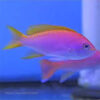The Dragon in Classical Chinese Literature: A Symbol of Power, Wisdom, and Mysticism

In Chinese culture, dragons are not only revered as powerful mythological creatures but also hold significant roles in classical literature. Across centuries, the dragon has been a central figure in the myths, folktales, and epic stories of China, symbolizing strength, wisdom, and mysticism. These legendary creatures often embody the deepest cultural values, playing pivotal roles in tales of heroes, gods, and cosmic balance. In classical Chinese literature, the dragon is not merely a symbol of physical might, but also a representation of philosophical concepts, moral teachings, and the harmony between humanity and nature.
In this article, we will explore the significance of the dragon in classical Chinese literature, examining its symbolic roles, its appearances in famous works, and its profound influence on the cultural and spiritual life of China.
The Dragon as a Symbol of Cosmic Power and Control
One of the most striking features of dragons in classical Chinese literature is their association with cosmic power and control over natural forces. The dragon is often depicted as a celestial being who governs the weather, particularly rain, and ensures agricultural prosperity. This connection is not just limited to controlling the weather, but extends to the regulation of natural elements such as rivers, oceans, and mountains.
In the ancient Chinese creation myths, the dragon is frequently portrayed as a force of order and control, taming chaotic natural forces. One of the most well-known stories that highlights this role is the “Fengshen Yanyi” (Investiture of the Gods), a classic Chinese novel from the Ming dynasty, where dragons are instrumental in the battles between gods and demons. The dragons in this tale represent powerful forces that maintain balance in the world, and their intervention is essential for protecting the cosmos from evil forces.
Additionally, the dragon’s role as a symbol of imperial authority is also highlighted in many ancient texts. The emperors of China, often referred to as the “Son of Heaven,” were thought to embody the power of the dragon, linking the ruler’s authority to the divine will. In this context, the dragon represents both physical and spiritual strength, reflecting the emperor’s ability to command the heavens, the earth, and the people.
Dragons in Chinese Folktales: Wisdom and Transformation
Beyond their role as cosmic entities, dragons in classical Chinese literature also symbolize wisdom, transformation, and enlightenment. In many folktales, dragons are portrayed as wise, mystical creatures who possess immense knowledge and insight into the workings of the universe. They are often seen as guardians of ancient wisdom, passing on knowledge to those worthy of learning.
One such tale is the famous legend of “The Dragon and the Pearl”, a well-known story from Chinese folklore. In this story, a dragon guards a magical pearl that holds the secret to immortality and eternal wisdom. The dragon symbolizes the possession of profound knowledge, and only those who demonstrate courage and intelligence are able to obtain the pearl. This story, like many others, reinforces the idea that wisdom is not freely given but must be earned through strength, perseverance, and moral character.
Another notable example of a dragon representing wisdom in Chinese literature is the story of the Dragon King’s Daughter, a tale found in the “Journey to the West” (西游记), one of China’s Four Great Classical Novels. In this story, the Dragon King’s daughter is transformed from a dragon into a human form to teach the protagonist, the monk Xuanzang, valuable lessons about humility, compassion, and the pursuit of enlightenment. The transformation of the dragon from a creature of immense power to a being capable of human understanding represents the dual nature of the dragon in Chinese culture: as both a being of strength and one capable of deep spiritual transformation.
The Dragon in the Quest for Immortality
In several classical Chinese literary works, the dragon is linked to the quest for immortality. The dragon’s association with eternal life, particularly through the mythical dragon’s pearl or its connection to the elixir of immortality, plays a recurring theme in Chinese mythology and literature.
In “Zhuangzi”, a classic work of Taoist philosophy, dragons are depicted as beings that transcend earthly limitations, representing the ultimate freedom of the soul. The story of the dragon’s ability to soar freely through the heavens, undisturbed by the constraints of earthbound existence, is symbolic of the Taoist ideal of transcendence. Zhuangzi uses the dragon as a metaphor for the sage who, like the dragon, moves effortlessly between the realms of reality and the ethereal, embodying the fluidity of existence and the boundless nature of the universe.
Additionally, dragons in Chinese literature are frequently associated with the mythical elixir of life. The dragon’s role in guarding or even creating these elixirs connects the creature to the pursuit of immortality and eternal wisdom, reflecting the Daoist and Buddhist themes of transcending death and achieving enlightenment. In the “Classic of Mountains and Seas” (山海经), an ancient Chinese text that features dragons in many forms, these mythical creatures are often associated with life-extending substances, cementing their status as symbols of eternal life and cosmic regeneration.
The Dragon in “Journey to the West”
One of the most iconic appearances of the dragon in classical Chinese literature comes from the famous novel “Journey to the West” (西游记), written by Wu Cheng’en during the Ming Dynasty. The dragon in this epic is not just a powerful, divine creature but is also portrayed as a character with human-like qualities, making the dragon both an antagonist and a helper in the story.
In “Journey to the West,” the dragon appears in the form of Ao Lie, the son of the Dragon King, who is transformed into a white horse for the monk Xuanzang to ride on his pilgrimage to India. This transformation is symbolic of the dragon’s ability to adapt and change, emphasizing the dragon’s association with the fluidity of nature and the mastery of transformation. Through Ao Lie’s journey, the dragon’s role transcends its mythological stature to become a guide and companion in the pursuit of spiritual enlightenment.
The Dragon in “The Romance of the Three Kingdoms”
In the “Romance of the Three Kingdoms” (三国演义), another of China’s Four Great Classical Novels, dragons are often used as symbols of strength and the righteous fight for justice. The dragon appears not only in the narrative as a celestial symbol but also in the weapons and titles associated with the military leaders. The famous general Zhao Yun, for example, is associated with the image of a dragon, symbolizing his bravery and unmatched prowess on the battlefield.
While the dragon itself is not a central figure in the “Romance of the Three Kingdoms,” its symbolism is deeply embedded in the text’s portrayal of power, loyalty, and strategy. It is used to convey the idea that true strength comes from a deep connection to natural forces and a harmonious relationship with the world, just as the dragon is a creature that commands the elements and shapes the fate of those who encounter it.
Conclusion: The Enduring Legacy of Dragons in Chinese Literature
The dragon in classical Chinese literature is far more than a mere mythological creature; it represents the core values and philosophies that have shaped Chinese culture for thousands of years. From its role as a celestial being that governs the forces of nature to its representation of wisdom, transformation, and the quest for immortality, the dragon is a multi-faceted symbol in Chinese literary traditions. Its presence in stories like the “Journey to the West” and “Fengshen Yanyi” demonstrates its profound impact on Chinese thought, while its symbolic ties to strength, wisdom, and transcendence continue to resonate through Chinese literature today. The dragon’s influence endures not only as a cultural symbol but also as a source of inspiration in the collective imagination of China.

